Patient Outcomes, Holistic Care Hinges on Evolving Role of Pharmacist | Asembia 2025
From medication dispensers to comprehensive patient care advocates, pharmacists have never been more essential to the health care team and to patients in specialty care.
In an era of complex medical treatments and rising health care costs, pharmacists are transforming from medication dispensers to comprehensive patient care advocates through critical improvements in health outcomes, technological integration, and treatment affordability, according to Shea Hudson, chief operating officer of Optum Pharmacies at Optum Rx. In a session at Asembia’s AXS25 Summit, Hudson discusses the changing health care landscape shifting from volume to whole-patient and holistic care to improve outcomes.
In the mid-1990s, Hudson stated that there were 30 medications that were considered specialty. As of April 2025, there were over 500 medications that treat approximately 7000 disease states.
“This acceleration of the pipeline really led to the evolution of the pharmacist. When I think about our pharmacist today, behind each of those 500 medications, you have a pharmacist that is researching, learning, teaching, training, providing financial counseling, usually for a patient that is scared, anxious, nervous, exhausted, and doesn’t feel good,” Hudson said. “Pharmacists are tremendous patient advocates. Their upward motion of responsibilities has evolved from everything from patient coordination, prior authorizations, [and] clinical appeals, as well as finding financial solutions.”
CLINICAL EVOLUTIONS IN SPECIALTY PHARMACY
The responsibilities and roles of pharmacists have been expanding to better accommodate patient outcomes and holistic care. Pharmacists have now been seen as teachers and trainers for self-injectables, infusions, and questions on medication. They have been administering vaccines, and in some states, they have the ability to test, treat, and prescribe medications.
“I think pharmacists and care teams are going to continue to be more specialized than ever as a pipeline of medications as well as disease states continue to emerge,” Hudson said. “We have to continue to invest in our capabilities as well as our pharmacists.”
Pharmacists can help patients with rare diseases and medications that are new to the market, and specialty care can include patients with cancer, autoimmune diseases, acute chronic conditions, behavioral health needs, and more. Because of the complexity of these diseases, pharmacists can help with infusions and even provide home care for patients who need it.
On average, a patient with a rare disease will take 4 to 5 years from onset of symptoms to get a diagnosis, Hudson stated.
“The think about that: put yourself in this patient's shoes—physically, mentally, [and] financially exhausting. So every day, from diagnosis to therapy, matters,” Hudson said. “There's not a one-stop shop that fits all. Every disease state, every therapy, has uniqueness and nuances that we have to address with experience and expertise to bring all of the care team together.”
EVOLVING TECHNOLOGY LANDSCAPE
Artificial intelligence (AI) and machine learning (ML) have been significant topics of discussion, not only pharmacy, but the entire health care space. Hudson noted that she cannot go through the entire day without having a conversation about AI or ML.
“If AI and ML and technology can take away all the time-sucking administrative tasks that burden our pharmacists and bog them down from doing what they were trained to do, which is take care of patients, I'm here for it,” Hudson said.
She broke technology down into 3 different places to elevate the industry: clinicians, the patient experience, and the industry as a whole. With technology, pharmacists will be able to research information, profiles, clinical outcomes, and data to make the best decisions on behalf of their patients, all in one space. Pharmacists will then have more time to create enhanced clinical programs, develop deeper relationships with patients, and find breakthroughs in complex clinical cases.
But technology is not just for pharmacists and the health care team. It can also be for the patients.
“When I think about patients and technology, I think about patients that are requiring us to meet them where they are on their health care journey,” Hudson said. “Sometimes that's at a soccer field; sometimes that's going into a dance recital; sometimes that's at their lunch break, but when you're managing a chronic disease state, quality of life is equally as important.”
Virtual platforms have become ideal for patients, and technology has been shown to drive adherence and increase outcomes for patients.
AFFORDABILITY AS A DRIVER OF ACCESS
Affordability continues to be a major concern, with approximately 51% of all prescription spending equating to approximately 2% of prescription volumes. One therapy can cost thousands of dollars, and there is a direct correlation between affordability and adherence.
“When patients cannot afford their medication, they will make decisions. They'll make decisions to self-dose; they will make decisions to abandon therapy; they will make decisions to never start therapy, [and] all of these decisions are going to lead to really poor health outcomes, including preventable deaths and extra spend[ing] for the system,” Hudson said. “Pharmacists carry a really heavy burden to get care and therapy across the finish line for our patients.”
THE FUTURE OF PHARMACY
The one thing all of these advancements have in common is that care is a team effort, she stated. Hudson said she had never had a solo win. Someone was always teaching her; she would work in a team; she would be learning along the way, and that is something that is very important. Pharmacists, providers, dietitians, nurses, and the entire care team lean in and help each other every single day, she said.
“Some of our biggest goals in health care, including value[-based care] and moving from an industry that is focused on quantity of numbers and getting patients [through the system] and moving to a health care system that is truly focused on collaborative, proactive, high-quality care, we will have to do it together,” Hudson said. “We will not be able to achieve it as a solo win.”
Read More of Our Coverage:
Ready to impress your pharmacy colleagues with the latest drug information, industry trends, and patient care tips? Sign up today for our
REFERENCE
1. Hudson S. Evolving Role of the Pharmacist. Presented at: Asembia AXS25 Summit. April 28-May 1, 2025. Las Vegas, Nevada.
Newsletter
Pharmacy practice is always changing. Stay ahead of the curve with the Drug Topics newsletter and get the latest drug information, industry trends, and patient care tips.






































































































































